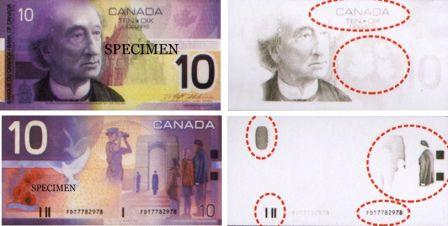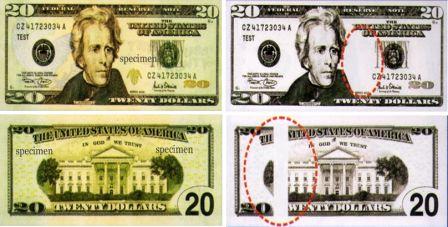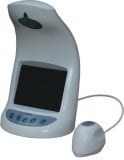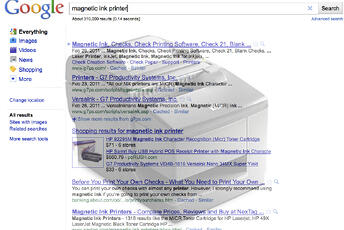Counterfeit Detection: Infrared Scanners, UV Lights & Multi-Testers
Gary Satanovsky

If you have been reading our blog series on counterfeit detection from the beginning, you have likely noticed by now the dizzying array of methods - both manual and mechanical -available. And they are hardly all equal. Although counterfeit detector machines are generally more reliable than the human eye, the weakest ones create a dangerous assurance in their infallibility when just the opposite is true. As our past posts described, devices like magnetic ink scanners and watermark-lamps are actually quite easy to circumvent, leaving users even more vulnerable than before.
In this, the last of our series on this topic, we will cover the remaining devices: infared scanners, UV-light detectors and all-in-one scanners.
Infrared Counterfeit Detectors
Infrared bill scanners function on the principle that it is possible to determine whether a banknote is genuine or not by looking to see which portions of the banknote are printed in infrared ink. Because infrared is not visible to the human eye, the ability to “see” infrared ink requires a “viewer” which renders the IR ink into the visible spectrum. Most such devices will look similar to the image displayed here, where an LCD screen displays an image of the banknote. Due to the cost and sensitivity of the components required to construct such a viewer, this type of device tends to run on the expensive side of the product spectrum.
For some world currencies, viewing IR ink is a viable solution. Consider these images, here, which shows the Canadian $10 note under both visible and IR light. Here, it is fairly easy to see the IR printed areas. However, it is not clear how easy it would be to train cashier-level employees how to recognize appropriate IR security features, sinc each denomination will have different patterns.
Now, take a look at these images of a U.S. $20 dollar note under infrared light. In this instance, one is expected to remember that, on a $20 bill, a thin band appears just to the right of the lower left-hand $20 numerals, while on a $10, it would be different, and a $5 there are two narrow bands, and a $100 has a narrow band and a wide band. Frankly, it is far too complex to expect a busy cash-handling employee to remember these things.  In fact, these IR features on the US banknotes are designed to be machine-readable characters, not human readable. Automatic bill acceptors, such as those on vending machines and slot machines, look for the IR “bands” and use it is one technique for identifying the type and denomination of note that has been inserted.
In fact, these IR features on the US banknotes are designed to be machine-readable characters, not human readable. Automatic bill acceptors, such as those on vending machines and slot machines, look for the IR “bands” and use it is one technique for identifying the type and denomination of note that has been inserted.
UV-Light Counterfeit Detectors
A good fraudster can create the feel of genuine currency by...using genuine currency. A bleached $5 turned into $100 will pass that test. A good fraudster will also know how to print a reasonable facsimile of genuine currency just convincing enough to fool a harried waiter or a bartender in a dark bar. But they cannot match the embedded security strip on every U.S. dollar of $5 denomination or greater. Place the bill under a UV detector, and the security strip lights up a solid primary color – the $10 is
orange, for example; $20s are green, the $100 is red. 
Here's what makes this test so good:
- It is remarkably quick. Just put the bill under the light, match the strip to the denomination, and you see if it is genuine or fake.
- It is remarkably accurate. No need to half-guess about something seemingly off in the look of the bill; just put the bill under the light for instant results without any false positives.
- It cannot be fooled. Unlike the old-fashioned counterfeit-detection pens, or the notoriously unreliable human eye, the UV detectors simply requires that the user be able to match the color of the glowing strip to the denomination they are testing.
Multi-Test Intelligent Currency Scanners
At the top of the heap in terms of accuracy and effectiveness lie those devices that conduct multiple tests on a banknote and apply some form of logical analysis to the results to determine the status of the bill in question. One of the more common samples of this type of device is a vending machine or some other machine that accepts bills automatically. The function of this type of bill acceptor is to submit the banknote to a series of physical examinations – typically utilizing various light sources (UV, IR, visible), magnified image examination, and reading of MICR printing (magnetic ink characters). Algorithms designed to interpret the results provide the ability to identify – specifically – what type of banknote has just been examined.
In recent years, these bill acceptors have moved from the vending machine application to the desktop, and are now available as stand-alone devices designed to be placed at the point-of-sale. The obvious advantage these devices offer over all others is that the machine itself provides a definitive answer to whether the note is real or not. There is no decision making left to the cashier to confirm the presence or lack of an expected security feature. However, these units also tend to be more costly than, for example, UV lights.
Best Practices for Counterfeit Detection
Although we have spent much time discussing the various devices for counterfeit detection, our overall goal is to present an overview of the best practices. A large part of the solution is through these devices, of course; but an equally important part is also about you. Nobody knows your business better than you, and therefore nobody is better equipped to decide what kind of detection level you need. Whatever you choose, however, remember to check back in with the FraudFighter blog for tips on making the most of it.
Gary Satanovsky
Blog posts
Related Articles.


Gary Satanovsky
Detecting Counterfeit Money - Magnetic Ink & Watermark Lamps
(Note: This is the second article in our series Best Practices for Counterfeit Detection. For the...

Leave a Comment